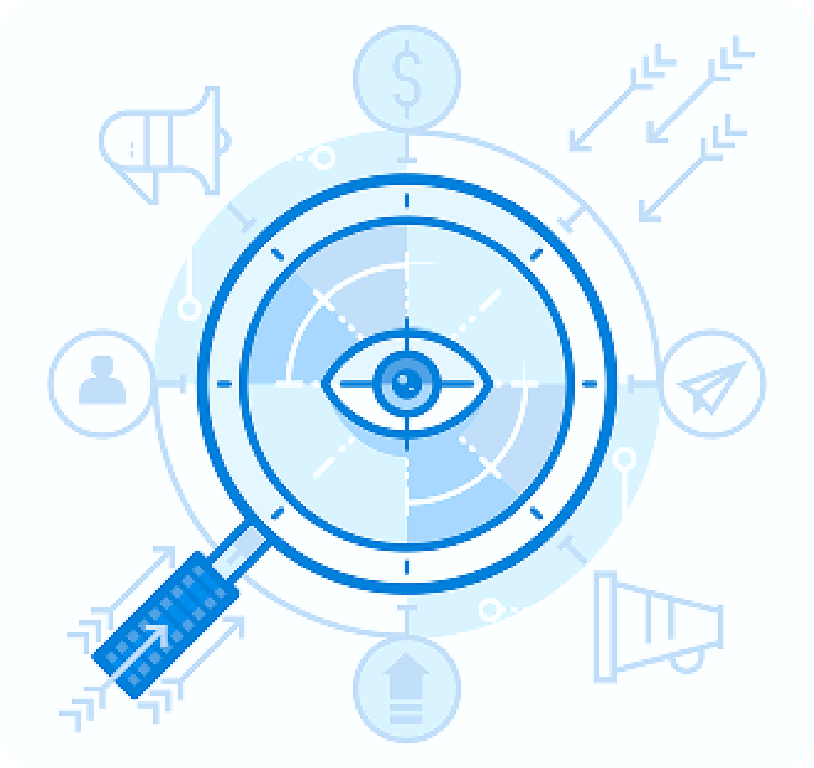Can a smarter approach to oversight cut breach timelines and lower fines before incidents escalate?
We introduce a practical guide that shows how modern analytics turn fragmented compliance and data streams into clear, actionable insights. Our aim is to help business and IT leaders improve risk management and reporting through real‑time monitoring and automated workflows.
We focus on outcomes: faster detection, streamlined incident triage, and fewer manual tasks for teams. The guide previews a stepwise framework—foundations, tooling, processes, monitoring, and continuous improvement—so readers see a clear path from definition to execution.
Throughout, we stress governance and technical rigor. Our role is to partner with you, offering practical steps grounded in real regulatory expectations that help translate analytics outputs into accountable decisions.
Key Takeaways
- Turn scattered signals into defensible insights that strengthen cybersecurity posture.
- Use standardized dashboards and automated reporting to improve board oversight.
- Reduce exposure and speed detection with analytics‑driven workflows.
- Follow a clear framework from foundations to continuous improvement.
- Combine technical controls with governance and trained teams for lasting results.
What Is Compliance Data Analysis and Why It Matters Today
Smart use of tools and signals lets organizations move from firefighting to anticipating risks. We define compliance data analytics as the systematic application of tools that collect, normalize, and surface actionable insights for oversight teams.
From reactive to proactive: how analytics elevates oversight
Traditional reviews react to incidents. With modern analytics, teams monitor transactions, access patterns, and communications in near real time. This shift shortens time to detect and speeds remediation.
Benefits include: better risk prioritization, fewer manual activities, and faster decisions that lower operational friction.
Structured vs. unstructured sources in modern programs
Structured sources (ERP, HR, audit logs) provide precise signals. Unstructured sources (email, chat, hotline transcripts) add context and intent.
Combining both yields richer insights and helps companies prioritize areas of exposure across a complex environment.
| Source Type | Typical Examples | Value for Oversight |
|---|---|---|
| Structured | ERP, access logs, transaction records | Accurate metrics, easy normalization, fast correlation |
| Unstructured | Emails, chat, hotline notes | Context, intent signals, early-warning patterns |
| External Sources | Watchlists, news feeds, vendor verification | Broader risk view across geographies and partners |
We advise teams to map sources, set clear ingestion processes, and link outputs to case management so insights become action rather than reports.
Regulatory Expectations in the United States and Beyond
Regulators now expect firms to show timely, measurable oversight that ties monitoring to real outcomes.
In the U.S., DOJ guidance (updated in 2024) elevates priorities: near real-time monitoring, evidence of resourcing parity for oversight teams, and explicit management of AI-related risks. The agency assesses whether firms have direct or indirect access to relevant information and whether monitoring tools and workflows actually surface issues quickly.
How prosecutors evaluate readiness
Prosecutors look at three practical elements: the ability to retrieve the right information, the tools in use, and the resources assigned to oversight. They expect logs, alerting, and clear audit trails that are retrievable on request.
What good programs demonstrate
- Integrated systems with consistent monitoring criteria and documented methodologies.
- Clear governance linking findings to action, including reporting to management and boards.
- Tested methods that show efforts to prevent and detect misconduct using analytics.
| Regulator | Expectations | Practical Evidence |
|---|---|---|
| DOJ (US) | Real‑time oversight, access to information, AI risk controls | Logs, alert rules, staffing records, documented methodologies |
| SFO (UK) | Use of analytics to test controls and behavior | Control-testing reports, trend monitoring, DPA commitments |
| EU / APAC | Data-backed evidence of program effectiveness across borders | Consistent policies, cross-border access, lineage and audit trails |
The Albemarle settlement illustrates impact: demonstrable monitoring and measurable program performance helped secure a 45% penalty reduction. That outcome shows why companies should invest in systems and methods that produce defensible outputs.
To prepare for scrutiny, we recommend maintaining ready access to information, documenting methodologies, and proving governance that turns insights into action. These steps reduce risk and show regulators that monitoring is operational, not just aspirational.
The Business Benefits of Compliance Data Analytics
Clear signals let leaders act sooner. We use practical metrics to lower incident rates, speed audit readiness, and cut cost through automation.
Faster detection reduces risk exposure and shortens investigative cycles. Automation trims repetitive processes and frees teams for higher-value work.
- Quantified value: fewer incidents, faster audits, and lower remediation spend thanks to automated reporting and standard reports.
- Improved effectiveness: thresholding and peer comparisons focus effort on the riskiest entities and controls.
- Scalability: monitoring grows with companies without a linear rise in headcount.
- Transparency: standardized reporting supports internal audit and regulators, easing examinations.
Well-governed inputs preserve trust in outputs and help executives reallocate resources using reliable risk management metrics.
Core Challenges and How to Overcome Them
Many programs stall not from lack of intent but from fragmented systems and unclear handoffs that slow progress.
Integration hurdles arise when systems use different formats and schemas. We recommend a centralized repository that harmonizes sources and reduces repeated work.
Quality and accuracy matter. Validation routines and reconciliation checks make outputs reliable. Small, repeatable tests catch issues early and preserve trust in reports.
Resource constraints and skills shortages are common. We advise phased investments: short pilots that show wins, then scale with targeted hiring or shared services.
Practical change plan
Adopt staged rollouts with clear training and stakeholder engagement. Communicate goals, offer practical coaching, and set measurable SLAs between teams to speed delivery.
- Prioritize risks using a phased adoption roadmap to reduce time to value.
- Use governance rules to preserve standards as the footprint grows.
- Automate repetitive tasks to free staff for judgmental work.
We pair architecture and people-focused management so programs deliver reliable outputs and measurable risk reduction across the enterprise environment.
Data Foundations: Sources, Quality, and Integration Best Practices
A reliable foundation begins with a secure repository that consolidates disparate sources into a single, governed view.
We design a target architecture that centralizes records in an encrypted store with role-based permissions. This single source of truth improves consistency and preserves accuracy for downstream workflows.
Building a centralized “single source of truth” for compliance
Start with a living inventory that links each source to risk assessment, refresh cadence, and integration complexity. Assign quality ratings and lineage tags to make remediation priorities clear.
Digitization and privacy for cross-border environments
Digitize paper and spreadsheet-held files to unlock trend work and efficient sampling. For cross-border rules (for example, GDPR), decide where to store sensitive information and where to review it in consultation with legal counsel.
Creating a living inventory aligned to risk
- Metadata management: classification, retention, and audit trails.
- Integration patterns: secure APIs and batched extracts to reduce latency.
- Process link: map inputs to alerts, scoring, and case workflows so analytics deliver action.
| Area | Capability | Result |
|---|---|---|
| Sources | Inventory & quality rating | Faster triage |
| Systems | Encrypted central store | Consistent access controls |
| Policies | Retention & privacy rules | Regulatory readiness |
We connect these foundations to practical analytics so companies can score risks, segment units, and trust the outputs that guide decisions.
Choosing the Right Analytics Tools for Compliance Programs
Selecting the right platform shapes how quickly teams turn signals into actionable workstreams. We focus on tools that deliver real-time monitoring, clear dashboards, and immutable audit trails so management can show timely oversight.
Essential capabilities
Streaming ingestion and real-time monitoring are table stakes. Tools should offer automated reporting, risk modules, and role-based controls to protect sensitive records.
Scalability, AI readiness, and vendor support
Evaluate systems for horizontal scaling and AI/ML readiness so teams can expand coverage without re-platforming. Vendor services matter: strong implementation and ongoing resources reduce rollout risk.
- Integration: proven connectors and reference architectures speed deployment.
- Security: encryption, logging, and access controls support defensible audits.
- Governance: configuration management keeps rules consistent while allowing tailored thresholds.
| Capability | Why it matters | What to check |
|---|---|---|
| Streaming ingestion | Fast signal capture | Proven connectors, low latency |
| Dashboards & reporting | Clear oversight | Custom widgets, automated exports |
| Audit trails | Defensible evidence | Immutable logs, exportable records |
| Scalability & AI | Future-proofing | Model support, horizontal scaling |
| Vendor support | Implementation success | Services, SLAs, training |
Types of Compliance Analytics and When to Use Them

Descriptive and diagnostic for historical insight
Descriptive methods explain what happened by summarizing records and surfacing patterns. Use them to report incident counts, trends, and simple ratios.
Diagnostic work digs into why events occurred. It links timelines, user activity, and contextual notes to reveal root causes and control gaps.
Predictive and prescriptive for forward-looking risk
Predictive models forecast likely outcomes (for example, which vendor poses rising risk). They require clean training sets and labeled events.
Prescriptive approaches recommend actions—threshold adjustments, targeted reviews, or automated holds. These combine model outputs with business rules and approval workflows.
| Type | Primary Use | Typical Inputs | Tool Features |
|---|---|---|---|
| Descriptive | Trend reporting | Logs, transaction records | Dashboards, aggregations |
| Diagnostic | Root‑cause work | Events, notes, timelines | Drilldowns, correlation |
| Predictive/Prescriptive | Risk forecasting & actions | Historical labels, features | Models, scoring, workflow links |
We scope assessments to match maturity: start with descriptive checks, then add predictive modeling as quality and coverage improve. Governance validates models, monitors drift, and translates technical outputs into prioritized operational steps.
High-Impact Use Cases Across Industries
Concrete examples illustrate how signal fusion and scoring speed decisions for investigators and managers. We focus on practical deployments that produce measurable outcomes and clearer reporting for stakeholders.
Fraud, AML, and ABAC detection
We combine transaction patterns, counterparties, and geographies to flag anomalies quickly.
Examples: suspect transaction clusters, layering schemes, and hospitality outliers that suggest bribery or policy breaches.
Vendor and third‑party risk screening
Structured feeds (sanctions lists) and unstructured sources (adverse media) merge to score suppliers and business units.
This approach improves segmentation and prioritizes review work where risks concentrate.
Whistleblower trends and training effectiveness
We mine reports and incident logs to spot cultural gaps and recurring themes.
Linking incident outcomes to course completion lets teams measure training impact and refine curricula.
- Monitoring frameworks: tune thresholds to reduce false positives and use feedback loops to refine models and tools.
- Reporting best practices: ensure timeliness, traceability, and clear escalation paths for executives and boards.
Building a Best-Practice Compliance Analytics Program
Strong governance and a focused roadmap turn monitoring efforts into measurable risk reduction. We frame a five-step program that ties work to enterprise goals and board-level metrics.
Define vision and align with enterprise risk management
We set a clear strategy that maps analytics objectives to business priorities and KPIs. This keeps teams focused and leadership accountable.
Assess current capabilities and prioritize gaps
Conduct a practical assessment of systems, access, automation, and skills. Prioritize fixes that deliver rapid improvement.
Identify sources and normalize for consistency
Catalog structured and unstructured inputs, standardize semantics, and create repeatable processes for ingestion and quality checks.
Launch, monitor, and refine models and thresholds
Begin with baseline models and dashboards. Track performance, tune thresholds, and reduce false alerts through iterative updates.
Operationalize insights into investigations, controls, and training
Embed outputs into case workflows, control updates, and targeted training so work converts into action. Define RACI across teams and management to sustain momentum.
| Step | Action | Owner | Success KPI |
|---|---|---|---|
| Vision | Set objectives & KPIs | Risk management lead | Board‑level KPI adoption |
| Assessment | Gap & skills review | Program manager | Roadmap with prioritized fixes |
| Normalization | Catalog & standardize sources | IT & analytics | Schema coverage % |
| Launch | Deploy models & tune | Analytics teams | Alert precision & time‑to‑investigate |
Ongoing Monitoring and Testing for Continuous Assurance
Continuous testing and targeted surveillance keep oversight aligned with shifting threats and internal priorities. We pair near real‑time monitoring with periodic checks so outputs remain reliable and defensible.
Real-time surveillance calibrated to evolving risk profiles
We tune sensors and thresholds using patterns and anomalies drawn from operational activity. This ensures alerts balance sensitivity with precision.
Sampling strategies and control effectiveness testing
Risk‑based sampling links assessment criteria to control objectives. Teams document frequency, selection rules, and retention so reviews are auditable.
Alert-to-action workflows and remediation tracking
We define SLAs that move alerts into investigations promptly. Remediation steps are tracked to closure and fed back to models to reduce repeat events.
- Tools and configuration: select stable platforms that export immutable logs and simplify reporting.
- Roles: first, second, and third lines own detection, review, and validation respectively.
- Testing: validate policies and systems regularly in complex regulatory settings to prove effectiveness over time.
| Test Type | Frequency | Owner |
|---|---|---|
| Real‑time monitoring | Continuous | Operations |
| Risk‑based sampling | Monthly/Quarterly | Controls team |
| Control effectiveness | Annual + on change | Internal audit |
Reporting and Communication: Turning Insights into Decisions
Clear, timely reports convert monitoring outputs into board-level actions and measurable priorities. We design reporting that reduces manual effort, speeds review, and links findings to governance.
Automated reporting for management and board oversight
We build automated reporting structures that deliver regular information to management and the board. These templates require minimal manual input and standardize content across functions.
Automated reporting can feed stakeholders and downstream systems, enabling rapid queries and repeatable attestations. For practical implementations, see integrated platforms for automated reporting.
Automated reporting tools accelerate second-line review and preserve audit trails.
Dashboards that surface patterns, anomalies, and KPIs
Dashboards must highlight trends, anomalies, and key performance indicators with the accuracy leaders need to act.
- Standard templates: simplify reviews and align expectations.
- Permissions & drill-down: let users explore context without altering core reports.
- Quality checks: validate inputs to protect trust in published figures.
| Purpose | Feature | Result |
|---|---|---|
| Board briefings | Automated summaries | Faster decisions |
| Operational review | Interactive dashboards | Cleaner triage |
| Audit readiness | Immutable logs | Defensible records |
We tie monitoring outputs to communication cadences so efforts produce clear narratives for leadership. Finally, we document changes, approvals, and rationale to keep reports audit-ready and defensible.
People and Governance: Resourcing the Compliance Function
Staffing, structure, and clear decision rights determine whether oversight tools produce timely, usable outputs.
In-house capabilities vs. shared services
We prefer dedicated in-house analytics within the oversight team for continuity, speed, and alignment with program goals.
Shared enterprise resources can provide scale and standardization, but they often slow prioritization and reduce control.
- In-house: faster iteration, tighter governance, clearer ownership.
- Shared: lower cost, centralized standards, potential prioritization delays.
- Hybrid: in-house core with shared platform services for scale.
Collaboration and governance routines
Clear connections between compliance, IT, and data governance are essential. Establish steering committees, quarterly tech reviews, and a living inventory of sources and integrations.
| Area | In-house | Shared |
|---|---|---|
| Speed | High | Medium |
| Control | High | Low |
| Cost | Medium | Low |
We define roles and training paths that include model validation, visualization, and stakeholder communication. Management routines—backlog prioritization, SLAs, and steering meetings—keep programs aligned with enterprise objectives.
Measure effectiveness by tracking adoption, alert precision, and cycle times. These metrics show leadership whether investments in capabilities and resources deliver measurable program results.
Measuring Effectiveness and Proving ROI
We define a concise measurement framework that links technical outputs to business outcomes. Metrics focus on reduced incidents, time-to-investigate, staff efficiency, and remediation timelines.
Linking outputs to KPIs and settlements
Start by mapping signals to measurable KPIs: incident counts, mean time to respond, and percent of alerts escalated. Use those figures to show progress and to defend program choices during regulator reviews.
Benchmarking and assessment
Compare performance against peer averages and published guidance (for example, DOJ and SFO expectations). Where gaps appear, prioritize improvements that yield the largest risk reduction per dollar spent.
- Quantify ROI: fewer incidents, shorter investigations, optimized staffing, and avoided fines (the Albemarle outcome is a practical example).
- Reporting artifacts: executive dashboards, monthly scorecards, and audit-ready reports that show trend lines and rationale.
- Assessment cycles: scheduled validation of model quality, control performance, and input integrity to sustain effectiveness.
We embed these measures into governance routines so the program continues to improve as threats and rules change. This approach turns monitoring into verifiable risk management and tangible ROI.
Conclusion
A pragmatic roadmap helps teams move from pilots to enterprise coverage while keeping controls clear and repeatable. We recommend strengthening foundations, choosing targeted use cases, and expanding iteratively with measurable success metrics.
When compliance, analytics, and data are aligned with governance, organizations show regulators they act deliberately and can reduce operational friction. Automation and streamlined processes scale coverage and free teams for judgmental work.
The real value arrives when insights feed dashboards, workflows, and management routines that keep risk visible and decisions timely. This approach delivers measurable business gains and stronger oversight.
We partner with leaders to embed these changes, build resilient programs, and foster the culture that multiplies impact over time.
FAQ
What is compliance data analysis and why does it matter today?
Compliance data analysis is the practice of collecting, normalizing, and examining information from policies, systems, and controls to identify risks and improve governance. It matters because regulators and boards expect proactive oversight, faster detection of issues, and evidence-based decision making. By turning fragmented sources into actionable insight, organizations reduce exposure, speed investigations, and demonstrate meaningful controls to stakeholders.
How does analytics move programs from reactive to proactive?
Analytics enables continuous monitoring and pattern recognition that flag anomalies before they escalate. Real-time dashboards, thresholds, and automated alerts allow teams to investigate early, tune controls, and allocate resources where risk is rising. This shift shortens response time, reduces remediation cost, and supports a risk-focused strategy rather than one driven by incidents.
What’s the difference between structured and unstructured information in programs?
Structured information includes transaction records, user logs, and database fields that are easy to query. Unstructured sources—email, chat, and documents—require parsing with natural language processing or search tools. Effective programs combine both types, enriching structured feeds with context from unstructured sources to uncover subtle patterns and intent.
What regulatory trends should U.S. firms watch now?
U.S. authorities emphasize real-time oversight, use of analytics and AI, and robust access controls. The Department of Justice and other agencies prioritize evidence that companies deployed appropriate tooling, monitoring, and resources to prevent and detect misconduct. Firms should document policies, resourcing decisions, and how tools produce oversight.
How do prosecutors evaluate a company’s tooling and resourcing?
Prosecutors assess whether controls match the firm’s risk profile, whether monitoring is meaningful (not merely cosmetic), and if teams had adequate staffing and expertise. They look for audit trails, escalation processes, and remediation history that demonstrate sustained commitment to managing risk.
How are international expectations evolving for multinationals?
Global authorities, including the UK’s Serious Fraud Office and EU regulators, expect similar evidence of data-driven governance, with added emphasis on cross-border privacy, data localization, and vendor oversight. Multinationals must balance centralized insight with local legal and privacy constraints.
What business benefits do analytics programs deliver?
Well-implemented analytics reduce operational risk, streamline audits, cut investigation time, and lower compliance-related costs. They also improve board reporting and support strategic decisions by quantifying risk exposure and control effectiveness.
What are the main obstacles to success and how do we overcome them?
Common hurdles include fragmented sources, inconsistent quality, and resistance to change. Overcome these by building a single source of truth, applying data quality controls, investing in training, and running pilot projects that demonstrate quick wins and ROI.
How do we build a reliable foundation for oversight tools?
Start by inventorying sources, standardizing schemas, and establishing ETL processes to normalize feeds. Implement master data management where needed and document lineage so teams trust the numbers. Privacy and encryption must be embedded from day one for cross-border uses.
What capabilities should we require from analytics platforms?
Seek real-time monitoring, configurable dashboards, robust audit trails, role-based access, and scalability. AI/ML readiness and vendor support for integration and regulatory updates are also critical for future-proofing.
When should we use descriptive versus predictive techniques?
Use descriptive and diagnostic techniques to understand past incidents and control gaps. Apply predictive and prescriptive models when you want to anticipate emerging threats, prioritize investigations, and recommend specific interventions based on risk scoring.
What high-impact use cases apply across industries?
Common use cases include fraud and AML detection, third-party risk screening, and whistleblower trend analysis. These efforts combine multiple sources and rules to detect suspicious patterns and measure the effectiveness of training and controls.
How do we operationalize insights into everyday workflows?
Integrate alerts with case management, ticketing, and remediation tracking. Define clear alert-to-action playbooks, assign ownership, and measure time-to-remediation to ensure insight leads to tangible mitigation and control improvements.
How should we approach continuous monitoring and testing?
Calibrate surveillance to evolving risk, apply sampling for control testing, and run regular effectiveness checks. Use automated checks where possible and combine them with periodic manual reviews to validate model assumptions and thresholds.
What reporting best practices help management and boards?
Provide automated, concise reports that surface key indicators, trends, anomalies, and remediation status. Use visual dashboards for patterns and include context (risk drivers, control gaps, and resource needs) to support informed decisions.
How do we staff and govern an effective analytics function?
Balance in-house expertise with shared services or vetted vendors. Create cross-functional governance with IT, legal, and internal audit to manage data access, model validation, and escalation pathways. Clear roles and training reinforce accountability.
How can we measure effectiveness and prove return on investment?
Link analytics outputs to KPIs such as reduced incident rates, faster investigations, lower fines, and remediation cost savings. Benchmark results against industry peers and document how insights influenced settlements or prevented losses to demonstrate tangible ROI.






